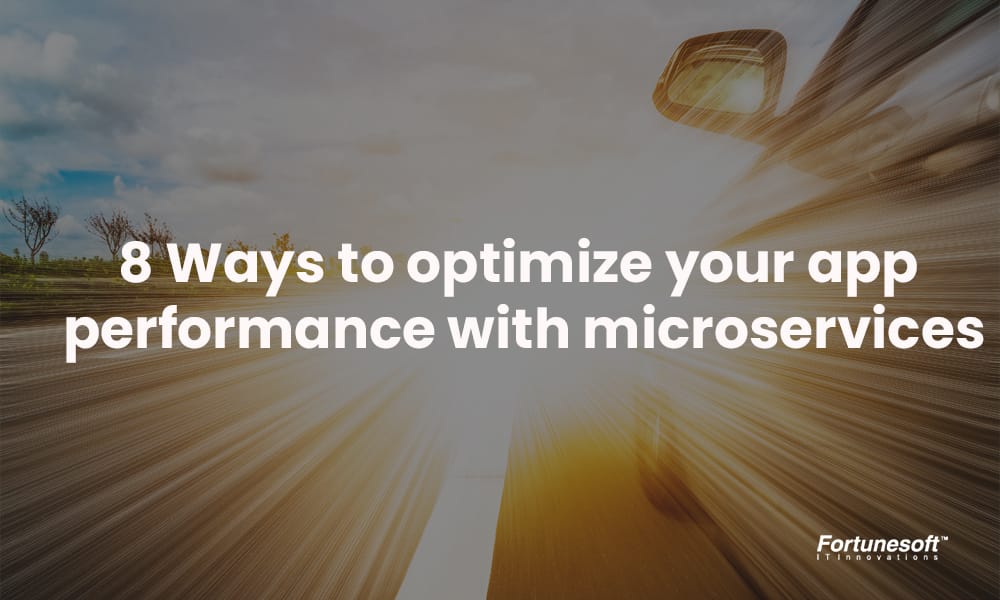 By Jeevan Babu September 1, 2020
10 min read
By Jeevan Babu September 1, 2020
10 min readTop 7 tips to transform to microservice architecture from monolithic architecture
Transforming a monolithic architecture to a system of microservices is an epic task. The ones who intend to accomplish this have aspirations like expanding the size of operational activity, quickening the pace of progress, and reducing the significant expense of change. Organizations need to develop teams while empowering them to deliver value in parallel and independently of one another.
As monolithic frameworks become too huge to even think about dealing with, numerous organizations are attracted to breaking them down into the microservices architecture. To do this well, you have to begin with a simple approach. Later on, extract services that depend on vertical abilities that are essential to the business and subject to frequent change. These services/applications ought to be huge from the start and ideally not dependent upon the rest of the monolithic architecture. Make sure that each step of this transformation represents everything from the smallest improvement to the overall architecture.
When all perspectives are thought of and the estimation of the change is understood, it is recommended to prepare yourself for the microservice migration by aligning your requirements with the following questions:
1. What business functionality each microservice will deliver?
2. What will be the boundaries of individual microservice?
3. What data and schema are required for individual microservice?
4. How will the microservices communicate with each other?
5. Are you ready with a rollback plan?
Once you have sorted all the prerequisites and analysis, head towards the transformation process to microservice with these 7 tips.
Identify potential effects
Try to see things from the customer point of view—whomever that customer may be. This sort of migration influences a major and probably significant application on which numerous individuals depend. Accordingly, you have to concentrate on their necessities, regardless of whether it means giving up a specific level of hypothetical architectural class.
External end users aren’t the main ones you’re writing code for. Think about the impact on internal clients. Concentrate on the external point of view of designers and the QA team. Those clients need to test and work with the components of the framework that, after the migration, are deployed on remote clusters. With the newly relocated architecture including more moving parts than the past monolithic architecture — and with innovation —the whole developer experience can change.
Start with a simple and fairly distributed approach
Beginning with a microservices architecture requires a minimum degree of operational availability. It requires on-demand access to the deployment environment, developing new sorts of delivery pipelines to separately build, test, and deliver executable services, and the skill to make secure, debug and screen a fairly distributed design.
The ideal approach for designers and operational teams is to develop the fundamental foundation, nonstop delivery pipelines, and the API management framework with the first and second support in case they collapse or develop a new one. Start with capacities that are reasonably distributed from the monolith, they don’t need changes to most of the customer-oriented applications that are using monolithic architecture and needn’t bother with that data storage. What the delivery teams are improving is actually validating their approaches, upskilling the colleagues, and building a base foundation expected to deliver freely deployable secure services.
Work from the “outside-in” approach
While you may think of totally breaking down a monolith into a simple mesh of individual microservices, that isn’t generally the case. Once in a while do we have the fortune to simply break applications down so simply and they run fine. Sometimes it’s exceptionally needed to gradually decompose chunks of a monolithic software application into independent microservices.
The key to a successful transformation from monolithic-to-microservices migration is to concentrate on the point of view of “outside in.” First, drive the fundamental steps of the migration from the viewpoint of the external client and related usefulness, as it’s a lot simpler to provide end-to-end value here. For instance, including a new satellite microservice that gives a spontaneous sign-up is significantly more than something like ‘extracts the client subsystems from the monolithic architecture altogether’. This methodology assists with abstaining from getting stuck with the technical parts of internal framework refactoring.
Choose the right coding languages
Monolithic applications are commonly based on a single language or platform, yet that is a bit much for a microservices-based architecture pattern—and once in a while it’s not even recommended. When breaking up a monolithic application, you don’t need to write the entirety of the component pieces in a similar coding language. With the cloud, you pick the best language for the application. For instance, suppose you’re changing over your outdated PHP/.NET application into AWS Lambda functions. While Lambda supports PHP, utilizing a language, for example, Python might be an ideal decision. Python was the first language written for Lambda. It has more code models, further documentation, and a bigger client base and Python is enjoyable to code with. The choice of language plays a significant role in the migration process.
Decompose features, not the Code
At whatever point developers need to extract a service out of a current framework, they have two approaches: separate code or rewrite a certain feature. Regularly the service extraction or monolith decomposition is thought of as an instance of reusing the current implementation with no guarantees and extracting it into different assistance. It makes the developers and especially technical managers dismiss the significant expense and low benefit of extracting and reusing the code. For instance, in the retail infrastructure, the ‘pricing and promotion’ feature is a complex bit of code. This feature is seemingly a decent contender for reuse and extraction.
Except if the feature is relevant, lined up with a clear domain concept, and has high intellectual property, we firmly suggest a rewrite and termination of the old code.
Go Macro First and then Micro
Finding the domain boundaries in a monolithic architecture is both an art and science. Generally, applying domain-driven design techniques to locate the limited settings defining microservices boundaries is a decent way to begin. Even though there are a few heuristics on how ‘micro’ ought to be the microservice: the size of the group, an opportunity to revamp the service, how much conduct it must symbolize, and so on.
The size relies upon what the number of services the delivery and operational groups can independently release, monitor, and develop. Start with bigger services around a sensible domain concept, and break down the service into various services when the teams are operationally prepared.
In some cases, rebuild than migrate
In some cases rebuilding, as opposed to migrating/transforming, is the best solution for understanding the maximum capacity in execution and speed gains. The attempt to relocate a portion of the current applications to microservices can sometimes be more likely to fit a square into a round hole. It is better to venture back and decide that rebuilding the present structure of each service was the best methodology. While it requires some investment forthright, the final result is clear of technical obligation, bringing down the expenses and sparing assets.
Post-transformation
So finally you have migrated your monolith to microservice by accommodating these 7 pro-tips in your transformation strategy. What’s next? Let’s check out!
Automation in microservices- The importance
Since microservice is all about a collection of smaller components, there is a need for automation in every activity such as builds, deployment, and testing. With automation, you can monitor more than one microservice at a time as per the need.
- The build and deployment process can be automated with the help of CI/CD servers. This will result in faster product release cycles.
- Various testing automation tools are used to enable automation in the backend testing process.
- The automation of UI testing can be done with some popular tools like selenium, cucumber, etc.
Logging and tracing
There can be dozens of microservices or serverless functions within a certain application. Therefore, there will be a need for application logging to parse, partition, and analyze the logging details.
We have to make sure that the following aspects are addressed:
1. Collection of the produced logs by microservices
2. Aggregation of logs
3. Error alerts
Some of the popular tools like Prometheus are widely used for microservice monitoring and the way the metrics are collected and processed. The role of Prometheus is to aggregate metrics and store them in a data store. This stored data is further used for analysis. The data is used using interactive and visualization tools like Grafana.
Also, to support the operations team, support team, and developers to troubleshoot microservices during an unexpected behavior, ELK stack is used to analyze and aggregate the logs.
Conclusion
To make the best decision, we have to take a stab at making the atomic step as small as possible under the circumstances. It is essential to break down the dependency between these steps. Subsequently, it is recommended to begin with edge services when a monolithic application should be transformed into microservices architecture. We can securely stop, revive, and endure this long process. Overwhelming as this migration may appear, these tips can assist you with making the key steps.
Author Bio


 Facebook
Facebook Whatsapp
Whatsapp LinkedIn
LinkedIn Pinterest
Pinterest











 Start Chat
Start Chat